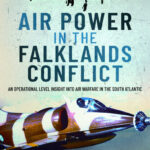
Bomber (x2) and fighters (and bombers).
Garry Campion, The Battle of Britain in the Modern Age, 1965–2020: The State’s Retreat and Popular Enchantment (Cham: Palgrave Macmillan, 2019). With this volume, Campion completed an evidently initially unplanned trilogy on the way the Battle of Britain turned from events into history (The Good Fight: Battle of Britain Propaganda and the Few (2009)), from history into memory (The Battle of Britain, 1945-1965: the Air Ministry and the Few (2015)), and now from memory into heritage.((Or, as Campion himself describes the stages — in possibly the first ever application of Braudel to aviation history! — l’histoire événementielle, processus historiques, and la longue durée.)) This is a great achievement, especially since these books were passion projects, not undertaken as part of his day job. This volume does, however does come closest to his role as an architectural historian, with case studies on the Battle of Britain Hall at the RAF Museum and (especially) the former Fighter Command station at Hawkinge, now the site of the Kent Battle of Britain Museum, along with a survey of the existing and proposed heritage landscape related to the Battle. As well, Campion covers the historiographical debates since 1965 (Royal Navy, Bomber Command, Coastal Command: it’s your time to shine!), the push to memorialise Fighter Command leaders through statues, and an interesting chapter on ‘consuming’ the Battle through movies, novels, warbird flights, air shows, games, models, stamps, and even cereal boxes. If you want to understand what the Battle of Britain means and has meant, this trilogy is the place to start.
Len Deighton, Bomber (Penguin Books, 2019 [1970]). I first read Bomber back in high school. I had been a pretty airminded kid, largely thanks to the sorts of pop culture artefacts Campion describes in The Battle of Britain in the Modern Age. I don’t remember being so interested in airpower history my teens, and Deighton’s account of a single air raid is possibly why, because it’s seared into my memory as absolutely destroying any sense that I might have had of aerial warfare being noble or glamorous in any way. That’s despite (or because?) the fact that it’s not history, but fiction. Indeed, the raid it describes never happened, the aircraft and their aircrew never existed, the airfields they took off from and (if lucky) landed at never existed, the town which was targeted in the raid never existed, and even the date of the raid, 31 June 1943, never existed. This does give Deighton license to pile on the pathos, but he clearly carried out substantial research, and while there are errors (Bomber Command’s bombs never contained phosphorus (400, 402), though its target indicators did) I don’t think there’s much he describes which didn’t happen something, sometime, like this. So, how does it hold up after more than three decades and a PhD in airpower history? Still devastating. Absolutely gutting. If you’re reading this blog, and you haven’t read Bomber, you really should. ObHistoricalFootnote: Bomber was the first novel to be written on a word processor, an IBM MT70. Though, it must be pointed out, it was Deighton’s secretary, Ellenor Handley, who did the actual word processing!
Holmes, Robin. The Battle of Heligoland Bight 1939: The Royal Air Force and the Luftwaffe’s Baptism of Fire. London: Grub Street, 2009. I felt like this book missed a trick. I had been expecting an account of the RAF’s largely disastrous raids against German naval targets in December 1939, and its subsequent abandonment of daylight raids in favour of the night operations now irrevocably associated with Bomber Command. And that is cerainly in here, though it really needed more surrounding explanation and analysis of the strategic context that led the RAF to, and then away from, this point. Only late in the book does the reader realise (well, sooner, if they google) that Holmes, an academic engineer, came to write this book because in 1985 he led the successful effort to raise a wrecked Wellington Mk IA which crashed into Loch Ness in 1940. That Wellington, N2980, now restored and on display at Brooklands (and one of only two which still survive), happened to have been a survivor of the 18 December 1939 raid on Wilhemshaven, in which 12 of 22 RAF bombers were shot down. The story of N2980 would have been a great hook for this story, particularly with a more critical use of Holme’s admittedly great sources (including the detailed memories of N2980’s pilot and even more detailed contemporary diary of its second pilot). As it stands, I found myself wanting both more and less from this book.
![]() This work is licensed under a Creative Commons Attribution-NonCommercial-NoDerivatives 4.0 International License.
Permissions beyond the scope of this license may be available at http://airminded.org/copyright/.
This work is licensed under a Creative Commons Attribution-NonCommercial-NoDerivatives 4.0 International License.
Permissions beyond the scope of this license may be available at http://airminded.org/copyright/.






Great stuff Brett. On the ‘Loch Ness Wellington’ story, as well as a pamphlet in my possession, there’s a full book on the machine and its story, and as well as the expected story of the recovery, about half the book is on the Battle of Heligoland Bight and related topics (squadron and reminiscences). https://www.librarything.com/work/1211386/book/186070043
The pamphlet: https://www.librarything.com/work/25052881/book/186201875
Aha! I did see that Holmes had written an earlier book on the same broad topic with the title One of Our Aircraft, but I’d assumed it was more about the recovery and The Battle of Heligoland Bight was his attempt at the history. Nope! The table of contents are practically identical, so at best the 2009 book is the second edition of the 1991 book — but nowhere is there any indication of a prior edition in my copy. Poor form from Grub Street!